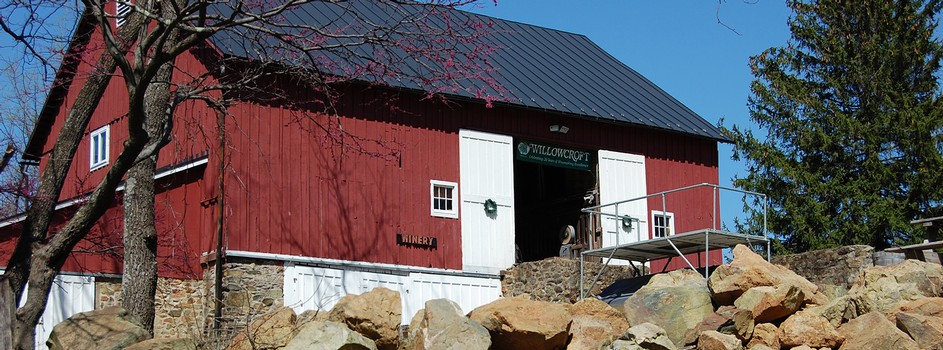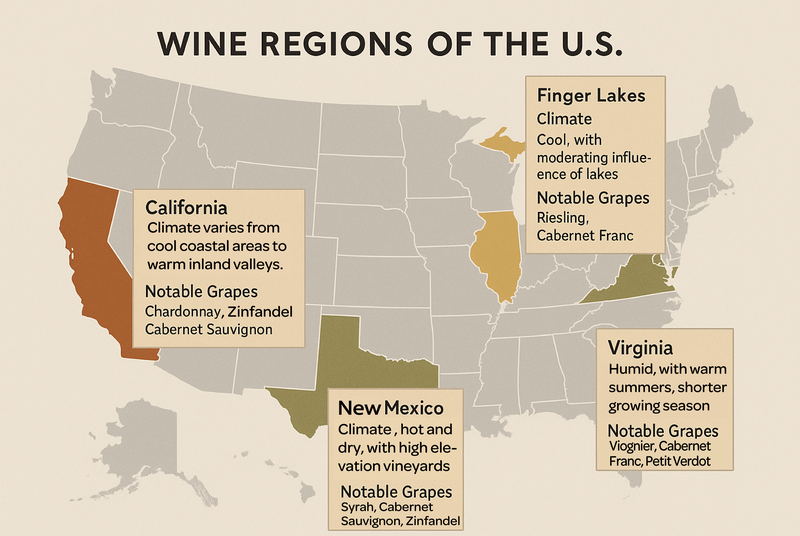News
Welcome to the Willowcroft blog! This is where we will be highlighting events and news from around the winery.
How Is Champagne Made? A Guide to Sparkling Wine Production Methods
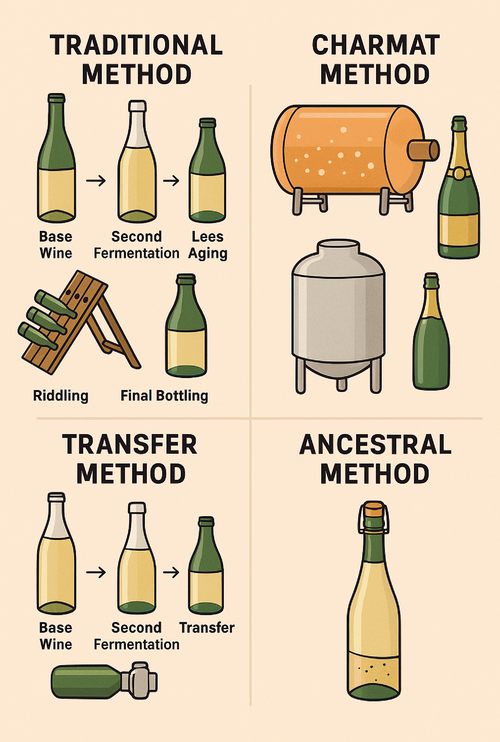
Sparkling wine is known for its festive bubbles, but not all fizz is created the same way. Champagne—arguably the world’s most iconic sparkling wine—is crafted using a time-intensive technique called the Traditional Method, or Méthode Champenoise. This process gives Champagne its signature fine bubbles, rich mouthfeel, and toasty, yeasty complexity.
But it’s not the only method. Let’s explore how sparkling wines are made, starting with the classic and moving through alternative worldwide techniques.
This is the most meticulous and respected method of making sparkling wine, used for Champagne, Crémant, Cava, and other premium wines.
- Step 1: Base Wine Production
Winemakers begin by creating a still (non-sparkling) wine from grapes, usually dry and high in acidity. These base wines are often blended from different vineyards, grape varieties, or vintages. - Step 2: Second Fermentation in Bottle
A mixture of sugar and yeast, called the liqueur de tirage, is added to the base wine, which is then sealed in individual bottles. This triggers a second fermentation, which produces carbon dioxide—the source of the bubbles. - Step 3: Lees Aging (Yeast Autolysis)
As the yeast cells finish fermenting the sugar, they die and settle inside the bottle, creating a layer of sediment known as lees. Wines are often aged on these lees for months or even years to develop richer textures and flavors like brioche, toast, and hazelnut. - Step 4: Riddling (Remuage)
Bottles are slowly tilted and rotated, traditionally by hand, to move the sediment down into the neck of the bottle. - Step 5: Disgorgement
The neck of the bottle is frozen, and the plug of frozen lees is ejected. The wine is topped up with a mixture of wine and sometimes sugar (called the dosage) to balance flavor before final sealing. - Step 6: Final Bottling and Labeling
The finished wine is corked, wired, labeled, and ready for enjoyment!
Not all sparkling wines are made using the traditional method. Here are a few other approaches:
- Charmat Method (Tank Method)
This method, used for Prosecco and many fresh, fruit-driven sparkling wines, carries out the second fermentation in a large, pressurized stainless steel tank rather than in individual bottles. It’s faster and less expensive, but it creates larger, less persistent bubbles and minimal yeast character. - Transfer Method
A hybrid of the traditional method, this approach starts with bottle fermentation, but the wine is then transferred to a tank, filtered, and rebottled. It’s more efficient and avoids riddling while retaining some lees influence. - Ancestral Method (Pét-Nat)
Short for Pétillant Naturel, this ancient method allows the wine to finish its fermentation in the bottle without added yeast or sugar. The result is a lightly sparkling, often cloudy wine that can be funky, unpredictable, charming, and fresh. - Continuous Method
This method, used less commonly today, involves continuous fermentation across several connected tanks, creating a steady stream of sparkling wine.
The method used to produce a sparkling wine significantly impacts the final experience in your glass. While the Traditional Method creates wines with finer bubbles and more complex flavors, other methods can produce fun, fresh wines perfect for casual sipping.
Whether you're popping Champagne for a celebration or toasting with a bright glass of Prosecco on the patio, knowing how your bubbles are made can deepen your appreciation—and guide you to styles you’ll love.
How Climate Shapes the Wines We Love: A Look at Four Unique Regions
If you’ve ever wondered why a Chardonnay from California tastes so different from one grown in Virginia or New York’s Finger Lakes, the answer often lies in one word: CLIMATE.
From the first bud break in spring to the final harvest in fall, a wine region's climate profoundly shapes the grapes it grows and the wine it ultimately produces. Understanding how climate influences wine is a fascinating way to deepen your appreciation for each glass.
- Warm climates promote faster ripening, leading to grapes with higher sugar content and lower acidity and typically more intense, full-bodied wines with higher alcohol and lush, ripe fruit flavors.
- Cool climates slow the ripening process, resulting in grapes with higher acidity and lower sugar and wines that are lighter, brighter, and often more nuanced.
But there’s more to climate than just temperature. Let’s explore some other key factors—and how they play out in a few distinct U.S. wine regions, including our home here in Virginia.
Sunlight is essential to photosynthesis and sugar development in grapes, but balance is key.
- Too little sun? Grapes may not fully ripen.
- Too much? Sunburned fruit and imbalanced wines.
Virginia's warm summer days and cool mountain nights give us the perfect mix, particularly atop the Catoctin Ridge where our vineyards are perched. That diurnal shift preserves acidity and builds complexity in grapes like Cabernet Franc and Albarino.
California, particularly in Napa or Paso Robles, experiences more intense, consistent heat and sun. This translates to wines with bolder body, ripe fruit flavors, and typically higher alcohol levels—think classic California Cabernet Sauvignon or Zinfandel.
Rain and humidity can make or break a vintage.
- Too much rainfall close to harvest? Grapes swell and lose concentration.
- High humidity increases disease risk, especially for tightly clustered grapes like Riesling or Chardonnay.
The Finger Lakes region in New York experiences a short growing season and cooler, often wetter conditions. But the lakes themselves help moderate the climate, making the area ideal for high-acid, aromatic whites like Riesling and Gewürztraminer.
New Mexico, where we’ve recently partnered for special tastings, is a high-elevation, semi-arid wine region. With ample sunshine and low humidity, grapes ripen well while maintaining freshness, particularly important for varietals like Syrah, Tempranillo, and sparkling wine grapes.
As global temperatures rise, winemakers around the world are being challenged to adapt:
- Earlier ripening can mean unbalanced sugar and acid levels.
- Shifts in suitability lead to new wine regions emerging, while traditional ones are being pushed to evolve.
At Willowcroft Farm Vineyards, we stay informed and nimble, choosing disease-resistant rootstocks, using canopy management to optimize sun exposure, and continually evaluating what grows best in our changing climate. Our recent addition of Albarino is one such adaptation—and it’s been a thrilling success.
From the rolling hills of Virginia to the dry elevations of New Mexico, the sun-soaked vineyards of California, and the cool, lake-influenced slopes of New York, climate gives every region its signature. For wine lovers, understanding these differences isn’t just educational—it’s delicious.
So next time you swirl a glass, consider the climate story behind it. It might just change the way you taste.
Wine Grapes vs. Table Grapes: What’s the Difference?

When you walk through the produce aisle, you’ll find plump, juicy grapes ready for snacking. But step into a vineyard, and the grapes look quite different—smaller, darker, and often less sweet. So, what sets wine grapes apart from table grapes (sometimes used for jelly and juice)? It all comes down to size, skin thickness, sugar levels, seeds, and purpose.
1. Size & Appearance
- Smaller and more compact in clusters.
- Thick skins and a higher ratio of skin to juice, contributing to deep color and tannins.
- Often darker and more intense in hue for reds; golden or green for whites.
- Larger, plumper, and juicier.
- Thinner skins for easy eating.
- Uniform in color, often bright green or deep red, bred for visual appeal.
2. Sugar & Acidity Levels
Wine grapes have higher sugar content (24-28% sugar, or 24-28° Brix) to allow for fermentation into alcohol.
- Table grapes contain less sugar (typically around 15-17° Brix) and more water, making them refreshing but unsuitable for winemaking.
- Wine grapes maintain higher acidity, which is crucial for balance in winemaking, while table grapes are milder in acidity, making them sweeter to eat.
3. Seeds vs. Seedless
- 🍷 Wine Grapes: Typically contain seeds, which contribute to tannins in the winemaking process. Some varieties (like Sémillon) can be nearly seedless but are rare.
- 🍇 Table Grapes: Usually seedless for convenience, thanks to selective breeding.
4. Purpose: Eating vs. Winemaking
- Table grapes are bred for fresh consumption, meaning they focus on crisp texture, juiciness, and mild sweetness.
- Wine grapes are grown to be fermented into wine, meaning they need higher sugar, acidity, tannins, and complex flavors to create a balanced final product.
5. Growing Conditions & Farming Practices
- Dry-farmed or minimally irrigated, allowing deep roots to pull minerals from the soil.
- Lower-yielding vines (grapes per vine) to concentrate flavors.
- Harvested once per season at peak ripeness, often by hand for premium wines.
- Heavily irrigated for plumpness.
- Grown for high yields, meaning more grapes per vine but with less concentrated flavors.
- Often harvested multiple times for consistent supply.
Technically, yes—but it won’t taste great. Because table grapes have lower sugar and acidity and higher water content, any wine made from them would be diluted, overly sweet, and lacking in depth. Table grape skins also contain fewer tannins, which means red wine made from them won’t have the structure or aging potential of true wine grapes.
While both table grapes and wine grapes come from the Vitis family, their differences make them suited for entirely different purposes. Table grapes are bred for fresh eating—crisp, juicy, and mild—while wine grapes are cultivated for complexity, sugar, acidity, and depth, all necessary for crafting fine wine.
Next time you enjoy a glass of Willowcroft wine, remember that these grapes weren’t meant for snacking—they were grown with intention, patience, and tradition to bring out the best flavors in every sip. 🍷
The Terroir Connection: How Soil Shapes the Flavor and Quality of Wine
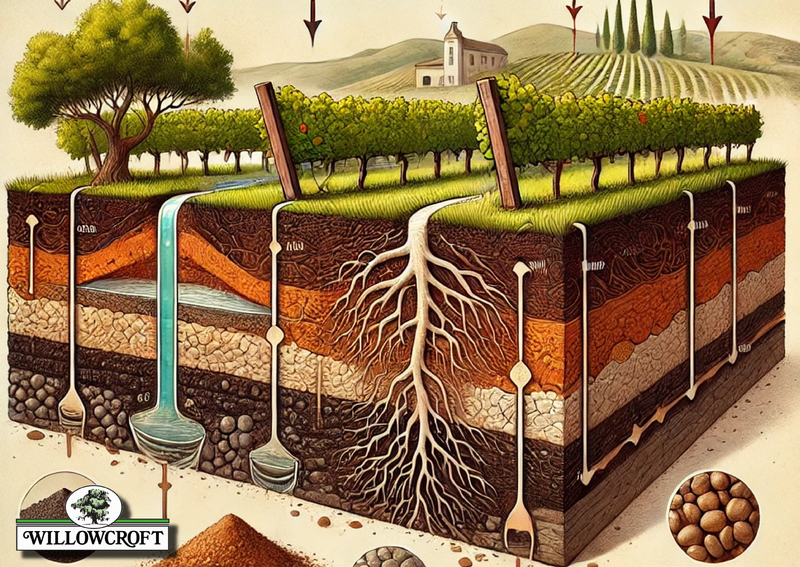 The soil in which grapevines grow plays a crucial role in winemaking, influencing everything from water management to the flavors in the final product. Understanding soil characteristics can help vintners decide to cultivate healthy vines and produce quality wines.
The soil in which grapevines grow plays a crucial role in winemaking, influencing everything from water management to the flavors in the final product. Understanding soil characteristics can help vintners decide to cultivate healthy vines and produce quality wines.
Particle Size, Drainage, and Water Retention
Soil texture—defined by the proportion of sand, silt, and clay—affects water drainage and retention, which are vital for vine health. Sandy soils have larger particles and larger pore spaces, allowing for quick drainage but limited water retention. Conversely, clay soils consist of smaller particles and smaller pore spaces, leading to slower drainage and higher water retention. Loam soils, which are a balanced mix of sand, silt, and clay, offer moderate drainage and water-holding capacity, often considered ideal for viticulture. The right balance ensures that vine roots receive adequate moisture without becoming waterlogged, promoting deep root growth and resilience.
Soil Color, Sun Reflection, and Heat Absorption
The color of soil can influence its temperature by affecting how it absorbs and reflects sunlight. Darker soils tend to absorb more heat, which can be beneficial in cooler climates by promoting earlier ripening of grapes. Lighter-colored soils, such as those rich in limestone or chalk, reflect more sunlight, potentially keeping the soil cooler and delaying ripening. This reflection can also enhance light exposure to the grape clusters, aiding in photosynthesis. Managing soil temperature through color and composition helps vintners control the ripening process and grape development.
Soil Composition and Flavor Influence
Beyond texture and color, the mineral composition of soil can subtly influence the flavor profile of wines. For instance, calcareous soils, which are rich in calcium carbonate, are known to retain water effectively and can impart a certain acidity to the grapes, contributing to a wine's freshness. Clay soils, with their excellent water retention, can produce bold and structured wines, making them suitable for varieties like Merlot and Sangiovese. While the direct impact of soil minerals on wine flavor is complex and not fully understood, the interplay between soil composition, water availability, and vine health undeniably shapes the characteristics of the wine.
In summary, a deep understanding of soil properties—including particle size, color, and composition—enables winemakers to optimize vine health and influence the sensory qualities of their wines.
From Snow to Bud Break: The Promise of a New Season in Northern Virginia Vineyards
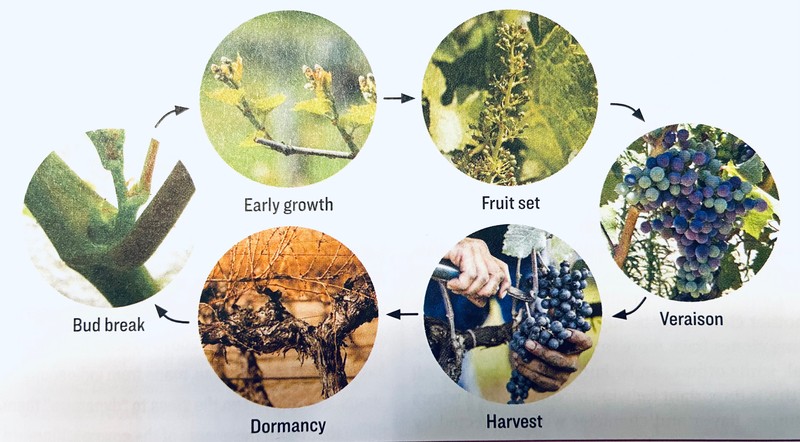
Northern Virginia has been blanketed by more snow and colder temperatures than usual as we find ourselves in the heart of winter. Notably, early January brought significant snowfall, with areas like Leesburg receiving more than 7 inches. While the landscape rests under this frosty veil, it's heartening to remember that the vineyards will begin their annual renewal in just about six weeks.
Grapevines are dormant, appearing as mere woody twigs amidst the snow. This essential period allows vines to conserve energy and prepare for the upcoming growth cycle. As temperatures start to rise and the ground begins to thaw, the first signs of life emerge with bud break. Tiny buds swell and burst open, revealing new shoots and leaves, marking the vine's reawakening.
Following bud break, the vines enter a phase of rapid growth. Shoots lengthen, and small, self-pollinating flowers appear. These blossoms, once pollinated, develop into tiny green berries. As summer progresses, these berries undergo veraison, changing color and beginning to ripen. The grapes reach their peak ripeness by late summer to early fall, ready for harvest.
The current winter conditions, though harsh, play a crucial role in this cycle. The cold ensures that vines remain dormant, protecting them and allowing for a more synchronized and healthy bud break come spring. So, as we navigate these chilly days, take comfort in knowing that the vineyards are merely resting, gathering strength for a vibrant season ahead. In just a few weeks, we'll witness the first signs of this transformation, a testament to nature's resilience and the promise of warmer days.
The Critical Role of Weather in Summertime Grape Growing
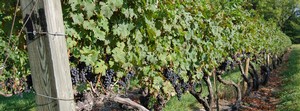 As the sun shines brightly over our picturesque vineyard, the importance of weather during the summer months becomes profoundly clear. At Willowcroft Farm Vineyards, the weather intricately influences every grape’s journey from vine to glass, making it a critical factor in the art of winemaking. This summer, we face another challenge: a significant drought affecting Northern Virginia, including Loudoun County.
As the sun shines brightly over our picturesque vineyard, the importance of weather during the summer months becomes profoundly clear. At Willowcroft Farm Vineyards, the weather intricately influences every grape’s journey from vine to glass, making it a critical factor in the art of winemaking. This summer, we face another challenge: a significant drought affecting Northern Virginia, including Loudoun County.
Summer weather plays a pivotal role in grape development, influencing the balance of acidity, sweetness, and the overall flavor profile of the wine. Warm, sunny days are essential for photosynthesis, helping the grapes accumulate sugars and develop rich flavors. However, it’s not just about the heat; cooler nights are equally important. They help preserve the acidity in the grapes, ensuring the wine maintains its refreshing qualities and complexity.
This year’s drought adds a layer of complexity to our grape-growing process. While some stress on the vines can lead to more concentrated flavors in the grapes, a prolonged lack of water can pose significant risks. Water-stressed vines may produce fewer grapes, and extreme conditions can affect the overall health of the vines, making them more susceptible to diseases and pests. At Willowcroft, we are carefully managing our water resources and employing strategies such as mulching and strategic irrigation to mitigate the impact of the drought.
Despite these challenges, our commitment to producing high-quality wine remains unwavering. Our experienced team closely monitors the vines and adapts our vineyard management practices to ensure our grapes reach their full potential. The delicate balance of nature and our dedicated efforts will ensure that Willowcroft wines continue to delight your palate even in the face of drought.
For more insights into our winemaking process or to join us for a tasting, visit our calendar of events page or email Kim at kim@willowcroftwine.com.

